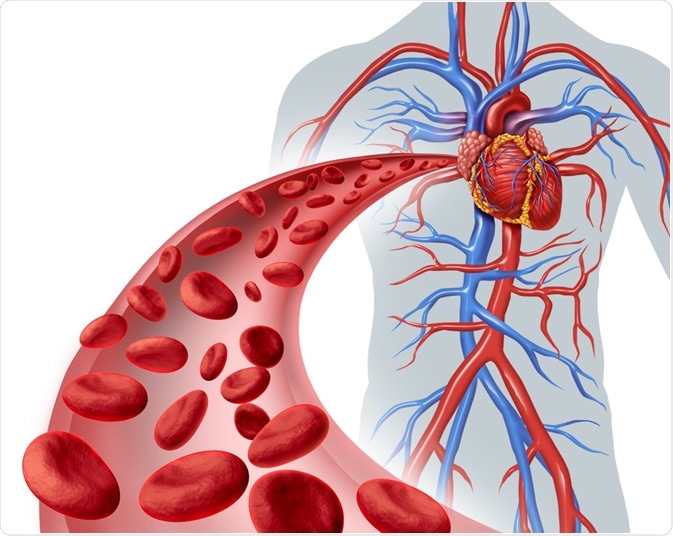The primary responsibility of the heart is to pump blood throughout the circulatory system. As the center of the circulatory system, the heart is an essential organ for maintaining the overall functioning of the body.
The cardiovascular system consists of many veins and blood vessels which ensure that all parts of the body are provided with an adequate amount of oxygen and nutrients to function efficiently. Without a sufficient supply of oxygen, any bodily function would fail, causing organ damage or organ death.
How a Normal Heart Pumps Blood -- The Children's Hospital of Philadelphia
Components of the heart
Fully understanding the heart’s vital function in the body entails the need to first understand its anatomy. As a busy and hardworking organ, the heart needs to closely monitor all of its components to ensure proper functioning. Even a minor cardiac dysfunction may result in significant functional challenges in the total body function of an affected individual.
Located at the center of the chest and in the thoracic cavity, the heart can be divided into four parts that are otherwise known as chambers, each of which contains several valves. Two of these chambers, which are called atria, are located in the upper portion of the heart and receive oxygen-free blood. The valves that separate these chambers are called atrioventricular valves, which are composed of the tricuspid valve on the left and the mitral valve on the right.
Meanwhile, ventricles, which are the chambers found in the lower portion of the heart, pump oxygen-enriched blood into the body. Similar to the atria, the ventricular chambers are also separated by valves called semilunar valves. These valves may be further divided into the pulmonary and aortic valves.
The heart is also composed of a protective layer that has three parts, which include the outer layer known as the epicardium, the middle layer known as the myocardium, and the innermost layer known as the endocardium. Both the outer and inner layers of the heart are thin; whereas the middle layer, makes up most of the heart and is comrpised of cardiac muscle fibers.
There are two types of blood vessels that facilitate the distribution of blood throughout the body. The vessels that bring oxygen-free blood back into the heart are called veins. Comparatively, the blood vessels that carry oxygen-rich blood away from the heart and to other body parts are called arteries. Originating in the left ventricle, the largest artery is called the aorta.
All these parts function together to ensure that all organs of the body are regularly supplied with a sufficient amount of oxygen and nutrients.
The pumping process
The heart’s blood pumping cycle, which is called the cardiac cycle, begins when oxygen-free blood returns to the heart through the right atrium, after distributing oxygen and nutrients to other parts of the body. The blood then moves into the right ventricle, which facilitates a transfer of blood into the lungs. Within the lungs, all waste gases, such s carbon dioxide, are released from the blood, while also reoxygenating the blood for its return to circulation.
The oxygen-rich blood returns to the heart through the left atrium and eventually into the left ventricle. This chamber then pumps blood to the other organs of the body through the aorta. After reaching each of the organs, deoxygenated blood leaves these organs through their respective veins until finally reaching the heart through the superior and inferior vena cavae, depending upon the organ. Several anatomical studies have estimated that a total of approximately 5.6 liters of blood circulate the body, with three cardiac cycles completed each minute.

Image Credit: Lightspring / Shutterstock.com
Generating a heartbeat
A normal heartbeat is evidence of the heart’s typical functioning, and each heartbeat is a manifestation of the oxygen-reloading process within the heart. As blood flows throughout the body in a single direction, any misdirection of the blood is avoided through the regulated closing and opening functions of the various cardiac chambers and valves.
The first phase of a heartbeat, which is known as systole, is a short period that occurs when the ventricles contract and initiate the closing of the tricuspid and mitral valves. The second phase, which is called diastole, is a relatively long period of ventricular relaxation, where the aortic and pulmonary valves close.
The heart’s “lub-dub” sound is produced by the continuous closing and opening of the valves. This process occurs in a way that the entry and exit of either oxygen-rich or oxygen-free blood into and outside the heart remain synchronized.
A complete and successful heartbeat is made possible by electrical impulses coming from the sino-atrial (SA) node that catalyzes the function of each component within the heart. The rate of systole and diastole are commonly used to quantify the rate of an individual’s blood pressure at a certain point in time. A normal adult heart rate of an adult is typically around 72 beats per minute.
References
Further Reading
Last Updated: Mar 18, 2021